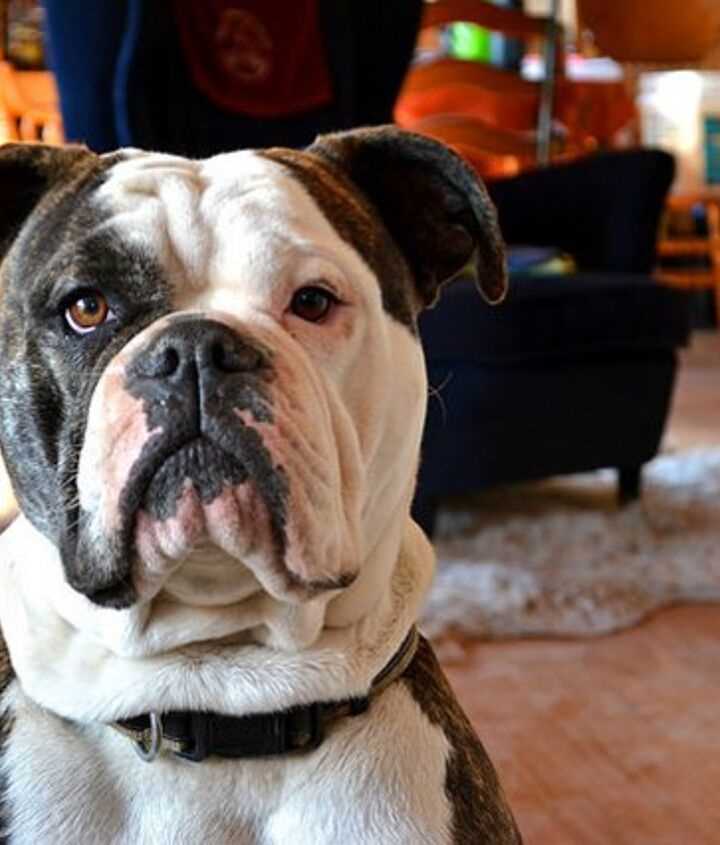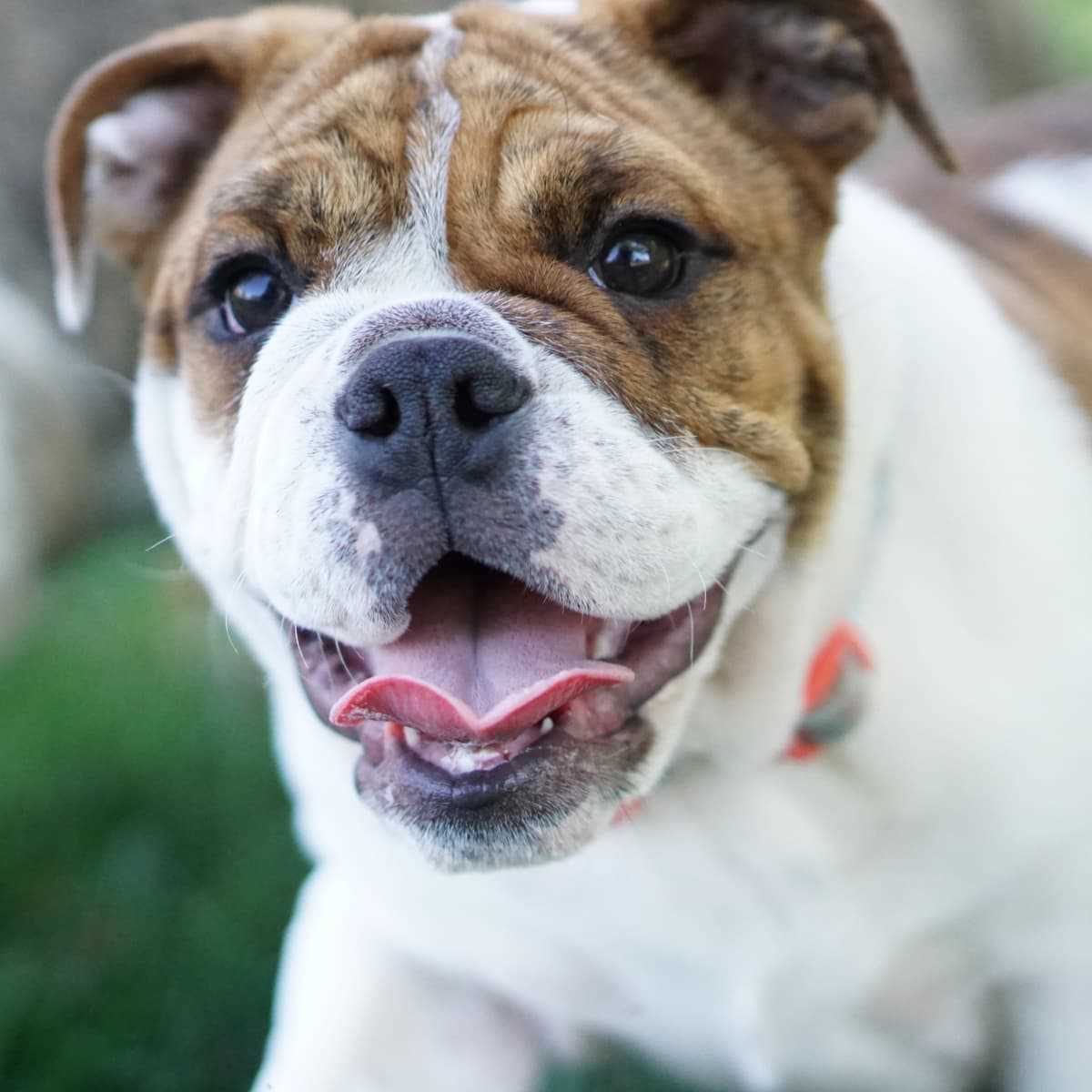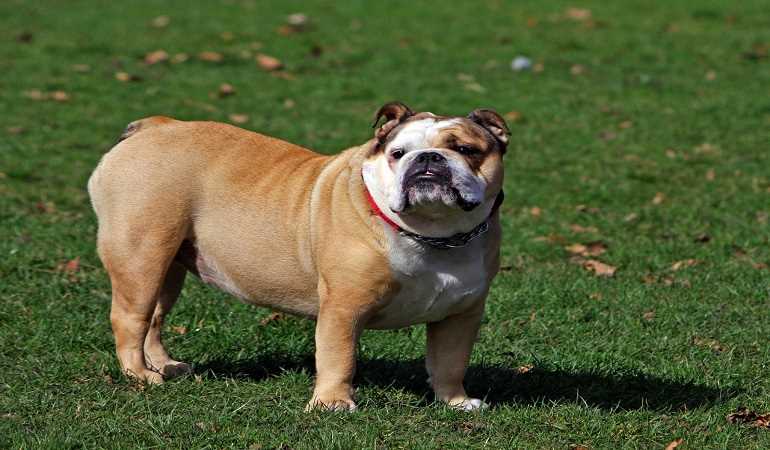
The Blue Olde English Bulldog is a unique and fascinating breed that has gained popularity in recent years. Known for their distinctive blue coat, these dogs are a stunning sight to behold. But there is so much more to these lovable creatures than just their appearance.
This comprehensive guide will delve into the history, characteristics, and care of the Blue Olde English Bulldog. We will explore their origins as a modern-day recreation of the original English Bulldog, their temperament and personality traits, as well as their specific needs in terms of exercise, grooming, and health care.
One of the most striking features of the Blue Olde English Bulldog is their coat color. While the traditional English Bulldog typically has a brindle, fawn, or white coat, the Blue Olde English Bulldog is characterized by a unique and rare blue coat. This coloration is the result of careful breeding and is highly sought after by enthusiasts and breeders alike.
But it’s not just their coat that sets them apart. The Blue Olde English Bulldog is also known for their friendly and affectionate nature. They are loyal and devoted companions, making them excellent family pets. Despite their muscular build and strong appearance, these dogs are gentle and good-natured, making them great with children and other animals.
History of the Olde English Bulldog
The Olde English Bulldog has a rich and fascinating history that dates back to the 18th century. This breed was developed in England for the purpose of bull-baiting, a popular sport at the time. Bulldogs were bred for their strength, tenacity, and agility, making them ideal for taking down bulls in the arena.
However, with the outlawing of bull-baiting in the early 19th century, the Olde English Bulldog faced a decline in popularity. Many breeders turned their attention to other pursuits, and the breed nearly became extinct. Fortunately, a group of dedicated breeders, led by David Leavitt, decided to revive the Olde English Bulldog and created a breeding program to recreate the breed.
The breeding program involved crossing various bulldog breeds, including the English Bulldog, American Bulldog, Bullmastiff, and American Pit Bull Terrier. The goal was to produce a healthier and more athletic bulldog that retained the original characteristics of the breed.
The Result

The result of the breeding program was the Olde English Bulldog, a breed that closely resembled the original working bulldogs of the 18th century. These dogs were strong, muscular, and athletic, with a powerful bite and a tenacious spirit.
Today, the Olde English Bulldog is recognized as a distinct breed by various kennel clubs and is prized for its loyalty, courage, and affectionate nature. While they may still have the appearance of the traditional bulldog, they are much healthier and more agile than their ancestors.
The Blue Olde English Bulldog
One variation of the Olde English Bulldog is the Blue Olde English Bulldog. This refers to Bulldogs that have a blue or gray coat color, which is caused by a dilution gene. The Blue Olde English Bulldog has the same characteristics and temperament as the standard Olde English Bulldog, but with a unique and striking coat color.
Appearance and Characteristics of the Blue Olde English Bulldog

The Blue Olde English Bulldog is a medium-sized breed with a muscular build and a distinctive appearance. They have a broad chest, a thick neck, and a strong, sturdy frame. Their head is large and square-shaped, with a wrinkled forehead and a prominent jaw. Their eyes are round and expressive, and their ears are typically small and set high on the head.
One of the most striking features of the Blue Olde English Bulldog is their coat color. As the name suggests, they have a blue coat that can range from a light grayish-blue to a deep steel blue. Their coat is short and smooth, and it has a glossy sheen that adds to their overall appeal.
In addition to their unique coat color, the Blue Olde English Bulldog has several other distinctive characteristics. They have a wide, powerful chest and a strong, muscular build that gives them a confident and imposing presence. Despite their muscular appearance, they are surprisingly agile and can move with surprising speed and agility.
The Blue Olde English Bulldog has a friendly and outgoing personality. They are known for their loyalty and affection towards their family members, and they are generally good with children and other pets. They have a calm and gentle nature, but they can also be protective when they sense a threat.
When it comes to grooming, the Blue Olde English Bulldog is relatively low-maintenance. Their short coat requires regular brushing to remove loose hair and keep it looking healthy. They are not heavy shedders, which makes them a good choice for people with allergies.
Overall, the Blue Olde English Bulldog is a unique and attractive breed with a distinctive appearance and a friendly personality. They make great companions and are well-suited to both families and individuals looking for a loyal and loving pet.
| Appearance | Characteristics |
|---|---|
| Size | Medium |
| Coat | Short and smooth |
| Color | Blue |
| Build | Muscular and sturdy |
| Temperament | Friendly, loyal, and protective |
| Grooming | Low-maintenance |
Temperament and Personality of the Blue Olde English Bulldog

The Blue Olde English Bulldog is known for its friendly and affectionate nature. Despite its intimidating appearance, this breed is actually quite gentle and loving. They are known to be great with children and are often referred to as “nanny dogs” because of their protective instincts towards their family.
These dogs are extremely loyal and devoted to their owners, making them excellent companions. They thrive on human interaction and crave attention and affection. They are known to be very social and enjoy being part of the family activities.
Blue Olde English Bulldogs are generally calm and easygoing, but they can also be quite stubborn at times. They have a strong will and can be independent thinkers, so consistent and firm training is important. With the right approach, they can be trained to be obedient and well-behaved.
Despite their friendly nature, Blue Olde English Bulldogs can be protective and wary of strangers. They make great watchdogs and will alert their owners if they sense any potential danger. However, they are not aggressive by nature and are not typically prone to aggression.
These dogs have a playful and fun-loving personality. They enjoy playing games and participating in activities with their family members. They have a good sense of humor and can often be quite entertaining with their antics.
It’s important to note that every dog is an individual and may have their own unique personality traits. Proper socialization and training from an early age can help shape a Blue Olde English Bulldog’s temperament and ensure they grow up to be well-rounded and balanced dogs.
Caring for a Blue Olde English Bulldog

Caring for a Blue Olde English Bulldog requires attention to their specific needs and a commitment to their well-being. Here are some key aspects to consider when taking care of this unique breed:
Diet
Proper nutrition is essential for the overall health and longevity of a Blue Olde English Bulldog. It is important to provide them with a balanced diet that meets their nutritional requirements. Consult with a veterinarian to determine the best type and amount of food for your Bulldog, taking into consideration their age, weight, and activity level. Avoid overfeeding, as Bulldogs are prone to obesity, which can lead to various health issues.
Grooming

The Blue Olde English Bulldog has a short, smooth coat that requires minimal grooming. Regular brushing with a soft bristle brush will help remove loose hair and keep their coat looking shiny. It is also important to clean their wrinkles and folds to prevent the buildup of dirt and bacteria. Use a damp cloth or specialized pet wipes to gently clean these areas. Additionally, regular nail trims, teeth brushing, and ear cleaning should be part of their grooming routine.
Exercise

Despite their stocky build, Blue Olde English Bulldogs require regular exercise to maintain a healthy weight and prevent boredom. Daily walks and playtime in a secure, fenced-in area are important for their physical and mental well-being. However, it is important to avoid excessive exercise, especially in hot weather, as Bulldogs are prone to overheating due to their brachycephalic (short-nosed) anatomy.
Healthcare

Regular veterinary check-ups are crucial for the health of a Blue Olde English Bulldog. Bulldogs are prone to certain health issues, such as hip dysplasia, allergies, and respiratory problems. It is important to monitor their weight, skin condition, and breathing, and seek veterinary care if any abnormalities or concerns arise. Vaccinations, parasite prevention, and dental care should also be part of their healthcare routine.
Health and Common Health Issues in Blue Olde English Bulldogs

When it comes to the health of Blue Olde English Bulldogs, there are a few common health issues that owners should be aware of. While these dogs are generally healthy, they can still be prone to certain conditions.
1. Hip Dysplasia
One of the most common health issues in Blue Olde English Bulldogs is hip dysplasia. This is a genetic condition that affects the hip joint, causing pain and mobility issues. It occurs when the hip joint doesn’t develop properly, leading to a loose and unstable joint. Regular exercise and maintaining a healthy weight can help reduce the risk of hip dysplasia in these dogs.
2. Brachycephalic Syndrome
Another health issue that Blue Olde English Bulldogs may face is brachycephalic syndrome. This condition is common in brachycephalic breeds, which have short muzzles and flat faces. It can cause breathing difficulties, overheating, and snoring. Owners should ensure that their Bulldogs have access to fresh air, avoid strenuous exercise in hot weather, and keep them in a cool environment to prevent complications.
3. Skin Allergies
Blue Olde English Bulldogs are also prone to skin allergies. These allergies can be caused by environmental factors, such as pollen or dust mites, or by certain ingredients in their food. Common symptoms include itching, redness, and skin infections. Regular grooming, using hypoallergenic products, and providing a balanced diet can help manage and prevent skin allergies.
4. Eye Problems

Eye problems are another concern for Blue Olde English Bulldogs. They can be prone to conditions such as cherry eye, entropion, and dry eye. Regular eye exams and proper eye care, including cleaning and using eye drops if necessary, are essential for maintaining good eye health in these dogs.
5. Obesity
Obesity is a common health issue in Bulldogs, including the Blue Olde English Bulldog. These dogs have a tendency to gain weight easily, which can put strain on their joints and organs. Maintaining a balanced diet, providing regular exercise, and avoiding overfeeding are crucial for preventing obesity and keeping these dogs in good shape.
| Common Health Issues | Prevention and Management |
|---|---|
| Hip Dysplasia | Regular exercise, maintaining a healthy weight |
| Brachycephalic Syndrome | Access to fresh air, avoiding strenuous exercise in hot weather, keeping in a cool environment |
| Skin Allergies | Regular grooming, using hypoallergenic products, providing a balanced diet |
| Eye Problems | Regular eye exams, proper eye care |
| Obesity | Maintaining a balanced diet, regular exercise, avoiding overfeeding |
While these are some of the common health issues in Blue Olde English Bulldogs, it’s important to note that not all dogs will experience these problems. Regular veterinary check-ups, a healthy lifestyle, and proper care can help ensure that your Blue Olde English Bulldog lives a long and happy life.
Training and Exercise for Blue Olde English Bulldogs
Training and exercise are essential for the well-being and happiness of Blue Olde English Bulldogs. These dogs are intelligent and eager to please, making them relatively easy to train. However, they can also be stubborn at times, so consistency and positive reinforcement are key.
When it comes to training, start early and be patient. Begin with basic commands such as sit, stay, and come. Use positive reinforcement techniques like treats, praise, and rewards to motivate your Bulldog and reinforce good behavior. Avoid harsh or punishment-based methods, as they can be counterproductive and damage the trust between you and your dog.
Socialization is also crucial for Blue Olde English Bulldogs. Expose them to different people, animals, and environments from a young age to help them become well-rounded and confident adults. Take them to puppy classes or enroll them in obedience training to further enhance their social skills and manners.
In addition to training, regular exercise is vital for Blue Olde English Bulldogs. These dogs have a moderate energy level and require daily physical activity to prevent boredom and maintain a healthy weight. Plan for at least 30 minutes to an hour of exercise each day, which can include walks, playtime, and interactive games.
When it comes to mental stimulation, puzzle toys and interactive games can be beneficial for Blue Olde English Bulldogs. These activities challenge their problem-solving skills and help prevent boredom and destructive behaviors. Consider using treat-dispensing toys or hiding toys for them to find.
Overall, consistent training, positive reinforcement, socialization, and regular exercise are essential for the well-being and happiness of Blue Olde English Bulldogs. By providing them with mental and physical stimulation, you can help them thrive and be the best companions they can be.

Tyler Newsom, a canine enthusiast, is passionate about bulldogs and their coat care. With years of experience and dedication, he shares his expertise to help bulldog owners maintain their beloved pets’ fur health and vitality through practical tips and advice.
